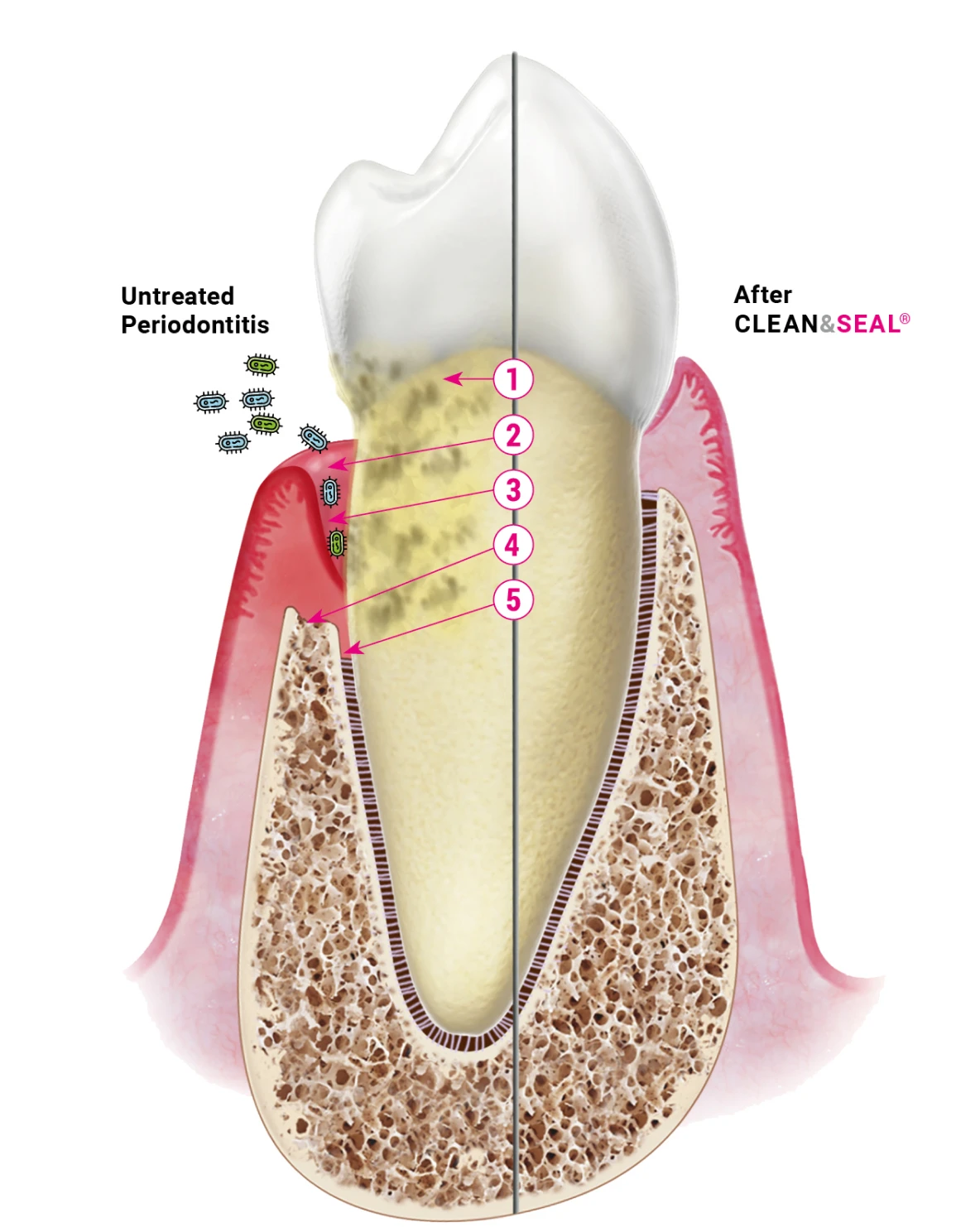Patient information
THERAPY FOR PERIODONTAL AND PERI-IMPLANT REGENERATION
what is periodontitis ?
Periodontitis is an inflammatory disease of the tissue surrounding the teeth (gingiva, cementum, periodontal ligament, bone), the so-called periodontium. With advancing age, it is the most common cause of tooth loss, but also smoking increases the risk for periodontitis.
The following signs may indicate a disease of the periodontium :
• Bleeding gums
• Swelling and reddening of the gums
• Receding gums and sensitive tooth necks
• Bad breath
• Secretion from the gum pockets
• Loosened teeth

WHAT IS PERI-IMPLANT INFLAMMATION?
Peri-implant inflammation is the generic term for inflammation around artificial tooth roots (implants). It is also know as peri-implant mucositis and peri-implantitis. If left untreated, peri-implantitis inevitably leads to the loss of the precious implant and possibly the functional prosthetics. Then, patients must wait for complete healing before the dentist or implantologist can place a new implant. Additionally, lost bone substance often has to be re-built through bone augmentation.
WHAT ARE THE OPTIONS FOR TREATMENT?
The following steps are usually performed by your treating dentist:
Periodontitis or peri-implant inflammation can be easily detected during a dental check-up. To determine the severity and aggressivity of the disease, your dentist will carry out various examinations in the mouth and the situation may also be evaluated with an X-ray image.
Periodontal treatment aims to reduce the inflammation in the tissue around the root of the tooth and thus stop the progressive breakdown of the periodontium.
With immediate treatment and removal of all bacterial plaque, the inflammation usually heals without complications. For effective mechanical removal of the biofilm from teeth and dental implants, the dentist uses special instruments as well as ultrasound and powder jet procedures.
-
Step 1
Pre-treatment with in-depth oral hygiene instruction and professional teeth cleaning.
Often, this can already significantly reduce the degree of inflammation of the gums.Step 2
Closed subgingival treatment
The dentist removes plaque also from within the gingival pockets with a non-surgical intensive cleaning under local anesthesia, using various instruments and devices. If signs of inflammation (bleeding, secretion) are still present after the closed subgingival treatment your doctor may choose one of two options :Option A
Renewed closed subgingival treatment
This is basically carried out as described above under 2 . However, additional preparations may be used that either have an antibacterial effect or are intended to support the removal of the diseased tissue.Option B
Surgical procedure (open treatment)
In surgical treatment, the pocket treatment leads to the removal of the biofilm and granulated tissues in an invasive way.
WHY CLEAN&SEAL® ?
The CLEAN&SEAL concept was developed on the basis of scientific findings to minimize or avoid any further need for surgery for the treatment of periodontal and peri-implant inflammations.
The goal is first to clean the periodontium free from the biofilm and bacterial load. Second, it is to regenerate the bony and periodontal tissue around the tooth for better long term prognosis and esthetic result.
Benefits of CLEAN&SEAL
• Preserve your natural teeth/implant longer
• Reduced costs compared to surgical procedure
• Scientifically proven treatment
• Reduces pain after the treatment
• Materials of non-animal origin

